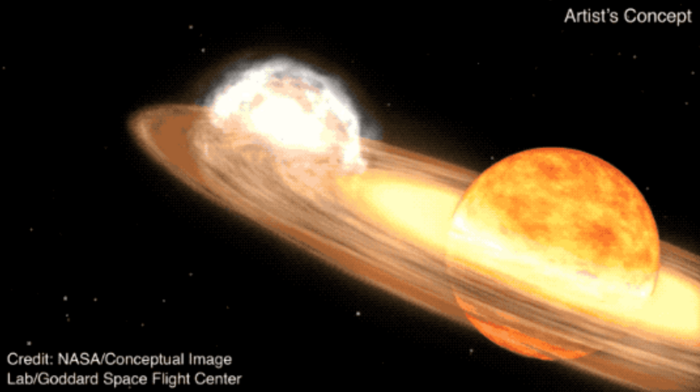A new star is ready to light up by September, but it will only shine for a few days: by September of this year, the binary star known as T Coronae Borealis will produce a new explosion that will make it visible to the naked eye, reaching a brightness equal to that of the North Star.
It is, in fact, a very particular star, called a 'recurrent nova': the white dwarf continuously tears matter and gas from its companion, a red giant, which accumulates in a disk that rotates around the first star;
Every 80 years or so, the gas reaches a critical temperature that triggers a nuclear fusion reaction and gives rise to the brilliant explosion.
The last event for T Coronae Borealis, the brightest of the five known recurring novae in the Milky Way, occurred in 1946 and now, according to astronomers, it is preparing to shine again.
When its brightness reaches its peak, it will become visible to the naked eye for several days and can be admired with the help of binoculars for just over a week, before it fades again for another 80 years.
“This could be a once-in-a-lifetime opportunity,” NASA said in a statement.
The pair of stars is located about 3,000 light-years from Earth within the Corona Borealis, a small constellation in the Northern Hemisphere that is shaped like a semicircular arc.
To locate the Corona Borealis it will be sufficient to locate the largest constellations of Hercules (the fifth largest in the sky) and Bootes: the new star will appear right in the middle of these two groups of stars.
The constellation is clearly visible in the spring and summer sky: it appears in the East at the end of February and then appears high in the sky in the months of May and June, so the conditions will be ideal for admiring the fleeting explosion.
The explosion occurs when the gas reaches a critical temperature (source: NASA's Goddard Space Flight Center)
Reproduction reserved © Copyright ANSA

